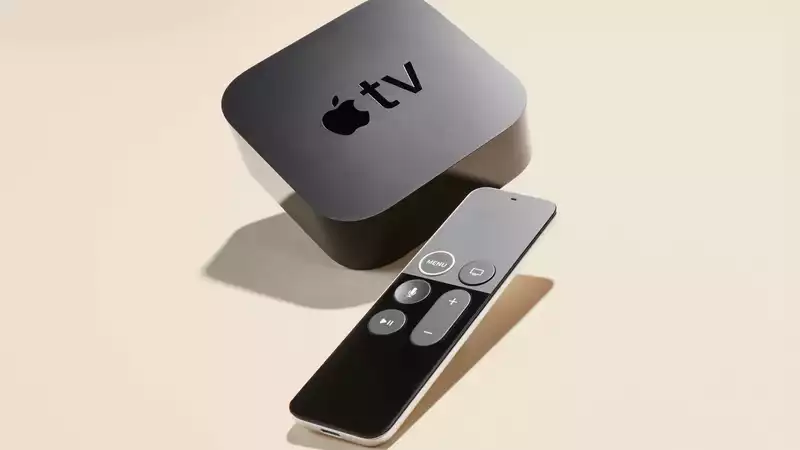Like countless others who shopped on Black Friday last year, I was enthralled by an unexpected bargain. The price was right, and with just a few clicks, I became the proud owner of a new Samsung 4K TV.
While there was nothing technically wrong with my existing TV (a 7-year-old Toshiba 1080p set), I was still quite excited about the leap to 4K content and better color. However, this change means replacing my trusty Apple TV HD, which has performed admirably (and uneventfully) for the better part of a decade. But with the limitation of 1080p, a new box is needed to get the most out of the TV.
We considered purchasing an Apple TV 4K, but the dilemma remained. The thought of paying full price for nearly five years old streaming hardware while a new Apple TV always seems to be right around the corner made me seriously hesitant. With a new Apple TV seemingly always just around the corner, the thought of paying full price for nearly five-year-old streaming hardware made me seriously hesitant. In need of a temporary solution, I searched the closet and dug out a forgotten present: an Amazon Fire TV Cube (one of "Tom's Guide's" picks for best streaming device).
Thus began a month-long experiment of switching to Fire TV. I'm sure this brand new Amazon 4K streaming box will hold its own until Apple releases new hardware. Perhaps I'll like the Fire TV even more after I try it out. I never thought I would miss my old Apple TV in a matter of hours.
I ran into problems right from the start. Certain apps would crash or take terribly long to load. Clicking on the remote often caused long delays. It was odd to see the latest streaming device struggling fresh out of the box. Sling, my main cable alternative for cord cutting, was almost unusable on the Fire TV. I realize that Amazon is not responsible for the development of all apps, but overall, I found it to be far less responsive than what I've grown accustomed to with Apple TV.
Even the simple act of setting up the Fire TV Remote frustrated me. For years, my Apple remote controlled the volume of my entire living room without a second thought. However, the Amazon box would not allow me to set the remote's IR blaster to control the volume of my Sony AV receiver unless I had Alexa turned on all the time. This seemed like a clear push to enable Amazon's smart assistant, but I had no intention of doing so.
What's wrong with Alexa, you ask? Or why not use Samsung's Smart TV feature? Well, I admit it's a matter of personal preference: I don't like having smart devices all over my house. The security issues surrounding smart TV updates and microphones are well known. For my own privacy and peace of mind, I decided early on that my new smart TV would not be connected to the Internet. I want to watch TV without feeling like the TV is spying on me.
When I tried the Samsung operating system, it, like the Fire TV, was missing some important apps that I am used to using. For example, the app I use to watch my favorite NBA team was nowhere to be found; this is not ideal when I spent $800 to buy a state-of-the-art TV.
And, as a personal bellyache, I soon came across an old episode of "South Park" where Cartman collects voice assistants. The word "Alexa" was uttered dozens and dozens of times, each time activating the Fire TV's voice command, temporarily lowering the volume and interrupting the show. I had stepped into my own version of hell.
But beyond the security benefits and the extensive app store, however, one thing became clear with the absence of Apple TV. As someone who works on a MacBook and uses an iPhone, Samsung and Amazon couldn't compete with certain aspects of the integrated Apple experience, such as the ease of use of AirPlay and the easy way to recall my LastPass password using my phone to log into apps and tvOS always fit smoothly into its role in my living room.
None of this is to say that Apple TV is perfect. The much-maligned Siri Remote remains a mystery, marred by odd design choices and a lack of tactile controls. If the remote is updated in the future, it would benefit from Amazon's button layout, especially the placement of the volume buttons, the mute button, and the convenient circular center wheel. Also, given the price, there is no reason for Apple to omit important features like optical audio output in the next generation.
However, after using the Bezos Box for a month, I found myself longing to get my old streaming life back. I was aiming to upgrade to 4K picture quality and deeper blacks when watching Netflix, not to reinvent the TV experience.
Eventually, I ended up doing what I had been trying to avoid all along: buying an Apple TV 4K online. Despite being a ridiculously overpriced and outdated piece of hardware compared to other options, I couldn't have been happier to plug it in and put my Fire TV back in the closet. After all, all that mattered was that it "worked."
.









Comments